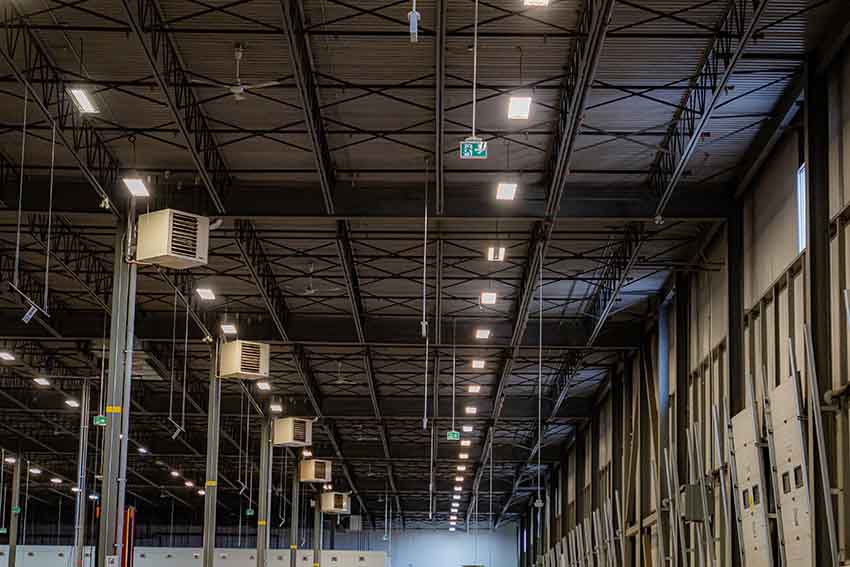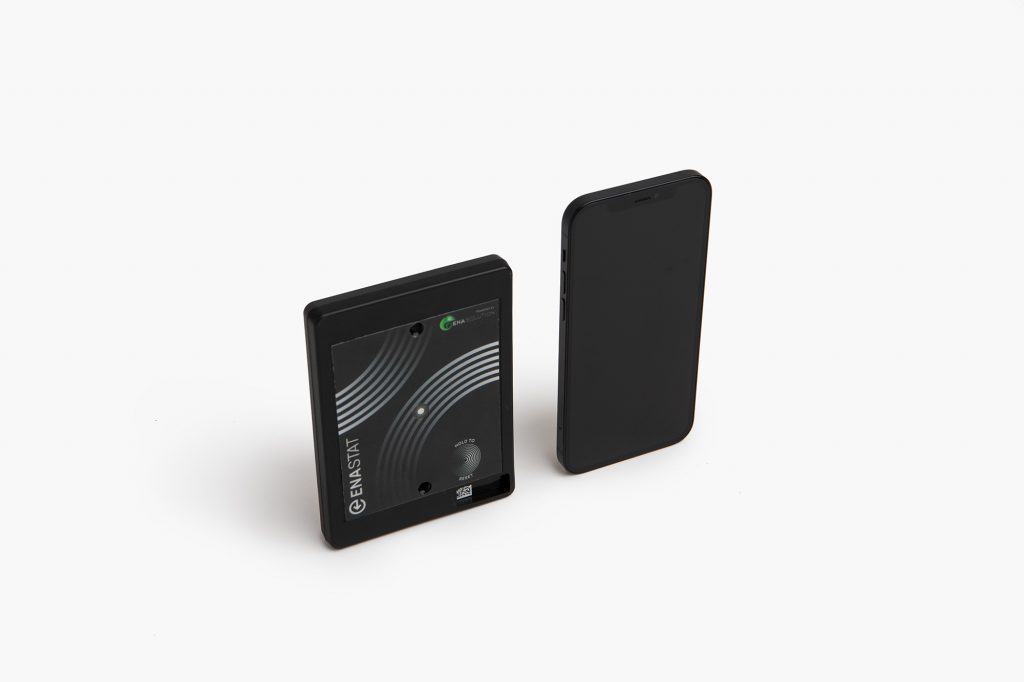Focused on solving environmental control problems for businesses, ENA Solution developed the ENASTAT smart thermostat, the world’s most durable, easy-to-use thermostat designed specifically for customers like theirs– manufacturers, distributors and commercial building operators. ENASTAT combines the simple, user-friendly features of smart residential thermostats with the industrial design required to stand up to the harshest environments.
Interview with Ramin Tajallipour, Co-founder of ENA Solution.
Easy Engineering: What are the main areas of activity of the company?
Ramin Tajallipour: Founded in 2020 by two accomplished heavy machinery engineers, ENA Solution creates smarter building controls for the hardworking small- and medium-sized businesses and institutions ignored by large technology giants. Our ENASTAT smart thermostat lowers energy costs and meets the design requirements of manufacturing facilities, automotive centers, schools, health clubs, restaurants and anything in between.
E.E: What’s the news about new products?
R.T: Since launching our first product in 2020, we’ve quickly iterated to debut two new versions with additional features our customers told us they wanted. Not only have we introduced new hardware, but we also frequently push upgrades to our existing customers via software updates. We stay close to our customers, ensuring we meet their needs now and into the future.

E.E: What are the ranges of products?
R.T: We offer three versions of our smart thermostat.
ENASTAT Gen 1 is a smart thermostat that supports low-voltage heating and fan systems.
ENASTAT Gen 2 supports both low- and high-voltage heating, low-voltage fans and low-voltage single-stage cooling systems.
ENASTAT Gen 2 + LTE offers all the functionality of our Gen 2 thermostat with LTE capabilities, so you never need to worry about WiFi. It’s perfect for remote areas or rental properties.
E.E: At what stage is the market where you are currently active?
R.T: ENA Solution is focused on serving small and medium-sized businesses that until now have been forced to choose between residential thermostats not designed for their needs or complex and costly building automation systems. For these businesses, the return on investment for a building automation system just isn’t always there. By one estimate, the average cost to deploy a basic system is at least $2.50 per square foot and can be as high as $7 per square foot, equivalent to at least $125,000 for a 50,000-square-foot building — and that’s on the low end. The installation can be costly and time consuming, possibly even forcing a temporary closure. On top of all that, these systems usually need to be upgraded every five to 10 years.
ENASTAT makes accessible the convenience and energy-savings of a building automation system. We took the technology that made smart home thermostats popular and applied that to industrial and commercial spaces. ENASTAT also combines the simple, user-friendly features of smart residential thermostats with the industrial design required to stand up to the harshest environments. And it does so affordably — at just $249 to $399 per unit.
E.E: What can you tell us about market trends?
R.T: The Internet of Things revolution for homes is now transforming industrial and commercial spaces, as the Industrial Internet of Things, or IIoT, has the potential to make smarter technology available to small and medium businesses. What’s driving IIoT? The cost and complexity of both hardware and software has declined precipitously over the last decade. IIoT is the great equalizer for small and medium-sized businesses not in the market for a six-figure building management system. It’s an excellent time for businesses to make their buildings smarter and more energy efficient.

More granular, real-time data and micro-zoning make system optimizations much more intelligent than traditional building management systems. For example, programming on/off-logic is terrific if your facility’s operations never change. But when there’s variability to schedules, external conditions, internal preferences or any other factors, having a system with decision logic can drive additional savings. Further, the user will now have an abundance of insights and analytics to review to determine if there are more structural concerns which need to be addressed, such as preventative maintenance needs.
The days of paying six figures for a system which automatically turns on and off your lights are coming to an end. Today’s IIOT tools deliver greater and more economical opportunities for energy efficiency, facility management and occupant experience while promising a more future-proof foundation upon which the latest technologies can be added.
E.E: What are the most innovative products marketed?
R.T: Before ENASTAT, the only available smart thermostats focused on residences — think fragile casing, limited lockout abilities and home-centric app controls. That left business owners and operators with two choices in commercial climate control: technology that would feel at home in the 1980s or building automation systems that could cost upwards of millions of dollars.
Enter ENA Solution’s ENASTAT smart thermostat. Built for harsh environments and warranted for life, ENASTAT withstands the elements and the wear and tear of high-touch, high-traffic areas. The “faceless” design is made of a thick, overmolded plastic with no screen or protruding knobs, buttons or levers. Its sealed design also protects it from contaminants such as dust or debris. It’s also splash-resistant and capable of withstanding extreme temperatures. In short, ENASTAT can take a beating and keep on heating.
Beyond its ruggedized industrial design, ENASTAT’s smart thermostat also features universal voltage compatibility, internal backup batteries, enhanced Wi-Fi and cellular connectivity, as well as an array of sensors that measure both temperature and humidity for the most precise climate control. Its app-based software allows maintenance managers to easily authorize additional users and offers advanced HVAC analytics for effortless maintenance. A large oil and gas manufacturer used ENASTAT’s analytics to save an average of 10% on its heating bills with 39% savings during the coldest month of the year. ENASTAT’s advanced features also helped the manager discover issues with the facility’s insulation, leading to even more energy savings.

E.E: What estimations do you have for 2022?
R.T: ENA Solution created ENASTAT not only to deliver a great user experience but also to bring servicers and suppliers of HVAC equipment closer to their customers. This is increasingly important in 2022, as many of our HVAC partners face labor shortages. Through our thermostat and app technology, we’re able to provide valuable insights into equipment status and comfort level, enabling preventive maintenance and remote diagnostics. This eliminates driving across town just to troubleshoot, so techs can prioritize their time when and where they are truly needed. And if a customer has a question, a problem or a need, we can connect them directly with their HVAC professional, guaranteeing timely and high-quality service and results.
Additionally, ENASTAT is ideal for facilities looking to reduce heating and cooling costs in the wake of inflation. Long viewed as just “the cost of doing business,” utility bills are now in the crosshairs. ENASTAT helps building managers cut back on expenses without sacrificing occupant comfort by taking advantage of simple control methods, like:
- Choosing a setpoint that maximizes energy savings.
- Automatically adjusting the setpoint by a few degrees during non-working hours.
- Designating zones via the app to save energy when spaces aren’t in use.
- Staying on top of preventive maintenance. Reminders in the app indicate when it’s time for a filter replacement, annual tune-up or other routine HVAC actions that can help save energy in the long run.
